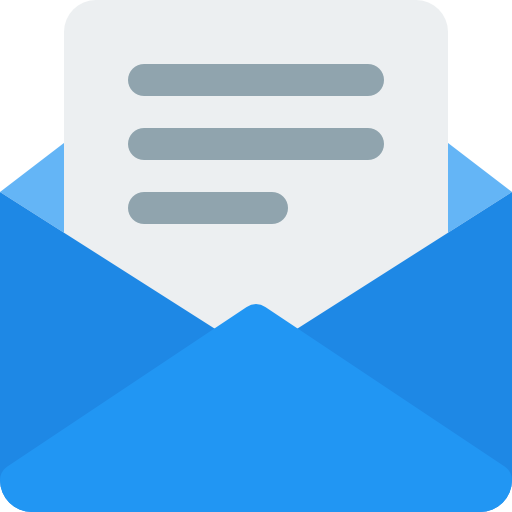How to Engage Donors with Your Nonprofit Newsletter (+ Examples)


Email newsletters are a cost-efficient and effective way for nonprofit organizations to connect and engage with their donors and supporters. In fact, for every 1,000 fundraising messages sent, nonprofits raised an average of $78. Although email newsletters can be very effective, they can also easily be ignored.
The average person checks their email 15 times per day or every 37 minutes, while the average professional spends 28% of their day interacting with emails, equating to 2.6 hours and 120 messages received. There is a lot of competition to make it to the top of your recipients’ inboxes.
With so much email content being pushed to donors and supporters, how can you ensure that your nonprofit organization stands out from the crowd?
Your nonprofit email’s sender reputation and donors’ short attention span can impact the level of engagement your email campaigns receive. You should keep that in mind, but consider the following best practices to give your email campaign the best chance at success.
1. Improve the Quality of Your Newsletter’s Content
Always remember, email marketing is all about quality over quantity. The content that you are sharing has to be engaging and relevant to your donors and supporters. A good rule of thumb for nonprofit email marketing is three newsletters and two donation requests per month.
Consistency is an integral part of creating an email marketing calendar or schedule. You want your readers to develop a routine of reading your newsletter on a specific day of the week or month. Hence, Keela sends out a newsletter every Friday without fail.
Don’t bite off more than you can chew. Develop a conservative newsletter schedule. Maybe once a month to start, and as you build up your retinue of content, you can increase your publishing schedule.
Looking for some inspiration? We have compiled a list of content ideas for your nonprofit’s next email newsletter:
- Highlight recent achievements
- Make a special announcement
- Spotlight a donor or group of donors
- Share an impact story
- Send a special, personalized thank you message
- Remind supporters about upcoming events and campaigns
- Encourage supporters to follow on social media
- Introduce your team
- Include a letter from your CEO
It is important to make sure that the newsletter content you share is valuable, has a responsive design, and has a clear call to action that speaks directly to your audience.


Use this Content Calendar to Create a Consistent Newsletter Schedule
With this content calendar, you can start creating email newsletter content to tell your nonprofit’s story, engage more donors, and maximize your marketing and fundraising efforts.
2. Segment Your Mailing List
Segmentation is key to maximizing your newsletter and email marketing campaigns. An email newsletter is a great way to connect with your audience, but if you are blanketing your emails and sending them to your entire mailing list, you’re missing out on an opportunity to develop unique donor relationships.
More so, if you aren’t segmenting your mailing list, you are more likely to lose subscribers’ interest since they may be getting email content that is irrelevant to their organization. Using Keela, you can use key data points to segment your contact lists, such as volunteer activities, monthly or annual contributions, or engagement rates.
3. Use Reader-Friendly, Interactive Newsletter Designs
While a catchy subject line and customization geared towards the reader will get your emails opened, it will be your well-designed newsletter that’ll retain their attention. Your email design can lighten the load of information, create an interactive experience, and allow your brand’s personality to shine through.
Focus on designing newsletters with consistent branding, easy-to-read font and colors, and a hierarchy of calls to action. Your newsletter should comply with the accessibility and usability standards developed by the World Wide Web Consortium.
New to the world of design and email marketing? Keela offers a very user-friendly drag-and-drop editor that will help you craft beautiful email newsletters to engage your audience.
4. Improve Your Nonprofit Email’s Sender Reputation
You’ve crafted a perfectly thought-out, beautifully designed email newsletter. Yet, you’re not seeing the return on investment you had hoped for. What if we told you that a quarter of nonprofit emails ended up in spam folders?
A 2018 study found that spam filters could cost nonprofits an estimated $30,000 annually due to one of four email messages not making it to the intended inbox. If your intended audience isn’t even seeing your email, how can they engage with your content?
Here are four quick tips to ensure your nonprofit email content doesn’t get lost in the junk mail folder
- Have recipients opt-in to receive your emails
- Include a clear unsubscribe link at the bottom of every email
- Ask your supporters to add you to their address book and mark your mail as safe
- Do an audit of your mailing list
You can get more tips and learn more on how to improve your Sender’s Reputation here.
5. Optimize Your Nonprofit Newsletter for Mobile Devices
Campaign Monitor reports that nearly 68% of emails are opened on mobile devices. With those numbers in mind, your nonprofit’s newsletter must be optimized for mobile with a responsive design.
A responsive email is one that is embedded with coding to ensure that it displays perfectly across various devices. If you aren’t keen on learning about coding, do not worry, many platforms offer email templates to help you craft well-designed, mobile-optimized newsletters. Email marketing services such as Keela and Mailchimp are both great platforms to help you get started.
Another important design element to pay attention to for mobile optimization is white space. White space is the space between images and lines of text to make the screen more reader-friendly. It increases the chances that all text elements will be read because it helps shift the reader’s eyes around the screen and take in more information.
Always check mobile previews first before hitting the send button, and be sure that fonts are legible, pictures are loading properly, and your call-to-action buttons are clear and accessible. You should also be conducting A/B testing of your email campaigns to increase the success rates of your email marketing efforts.
Learn more about A/B testing and how it can increase your emails’ open and click-through rates here.


Ready to Transform Your Email Marketing Strategy?
You can use this free guide to learn more about key email marketing metrics and how they work together to help you craft meaningful, engaging nonprofit newsletters.
6. Customize Your Email Address
Customizing your nonprofit’s email address is important to humanize your nonprofit’s brand and boost open rates. Consider adding a team member’s name to your email domain. This simple practice goes a long way to making recipients feel like they are developing a genuine connection with a real person and organization.
Your audience is more likely to flag your mail as spam when they receive an email from: weneedyourdonations@fundraising.com rather than katie@cleantheoceans.org. You can customize your address with Keela via the SendGrid Integration to send emails to your contacts with a customized email address.
7. Craft The Perfect Subject Line
Now that we’ve gotten your nonprofit email addresses and sender reputation covered and your email has landed in your supporters’ inboxes, we need to get your email opened. Email subject lines are often the make or break between your email being opened or not.
Invesp Consulting compiled some interesting statistics and trends regarding subject lines:
- 69% of email recipients report emails as spam based solely on the subject line.
- 47% of email recipients open emails based on the subject line alone.
- 18.7% decrease in open rates when the word “newsletter” is used in the subject line.
- Personalized subject lines are 22.2% more likely to be opened.
- Subject lines that create a sense of urgency and exclusivity can give a 22% higher open rate.
Feel the pressure? Keela’s here to help! Here are some tips to make sure you’re crafting the best possible subject lines to connect with your audience.
- Avoid trigger words such as “free” or “buy.”
- Be clear and concise: “5 Tips on How to Craft the Perfect Email Newsletter”.
- Keep the word count between 6-10 words.
- Include the recipient’s name in the subject line.
8. Track the Email Metrics that Matter
You’ve put all that work into crafting the perfect newsletter, so it’s only right that you track your email marketing performance.
Open rate is one of many key email metrics. But, in September 2021, Apple launched its Mail Privacy Protection, which allows recipients to protect their privacy by having the option of opting in to mail privacy features that block third-party users from collecting their engagement data.
Before the advent of Mail Privacy Protection, nonprofit marketers gathered pertinent data that would give them information about their email campaigns, such as open rate, which type of device your email was opened on, and even approximate location.
To understand how this can significantly affect your email marketing efforts, it’s important to note that Apple users make up over 35% of the market around the world. Of all emails opened on mobile, 93.5% were opened in Apple Mail, and this number was 58.4% for desktop users.
But, have no fear; there are alternative email metrics to consider when assessing your email campaign performance such as open rates, click-through rates, unsubscribe rates, etc.
While the introduction of these new privacy measures put a wrench in the validity of the trusty open rate metric – it is a great reminder to exercise nonprofit email marketing best practices by always tracking a diverse range of metrics and never relying solely on one metric to gauge the success of your campaign.
Track Your Nonprofit Email Metrics Using Keela
See how nonprofits use Keela’s email marketing tools to create, send, track, and measure the success of their email marketing campaigns.
Email marketing is a way to connect with an audience that already has an interest in your organization. It provides an interactive, targeted, and simple avenue for communication that will help you use data to continue developing your reach.
There is no perfect formula that works across the board but instilling and experimenting with these nonprofit newsletter best practices will make a massive difference in your email marketing efforts.
3 Nonprofit Newsletters to Inspire Your Next Email Campaign
1. Versus Arthritis


2. The Scoop by Battersea


3. Scope







